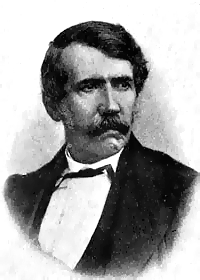News about maps
Digital cartography and GPS navigation
Mapstor news
This Day in History
Travelling with mapstor.com
This Day in History
4th December, 1674 Marquette founded the first European settlement
19th November, 1875 was born Hiram Bingham
18th November, 1832 was born Nils Adolf Erik Nordenskiöld
14th November, 1963 the island Surtsey was founded
11th November, 1729 was born Louis Antoine comte de Bougainville
20 May 1856 - The end of Livingstones travelling to South Africa
 On 20th of May, 1856 David Livingstone, steerling in the north channel of the Zambezi in the direction of the ocean port of Quelimane, reached the mouth of the river. This was the end of the grand and important by its results trip that lasted 2.5 years. During this expedition, Livingstone crossed the South Africa from west to east, watched over and opened the Zambezi Falls, which was named in the name of Queen Victoria.
On 20th of May, 1856 David Livingstone, steerling in the north channel of the Zambezi in the direction of the ocean port of Quelimane, reached the mouth of the river. This was the end of the grand and important by its results trip that lasted 2.5 years. During this expedition, Livingstone crossed the South Africa from west to east, watched over and opened the Zambezi Falls, which was named in the name of Queen Victoria.
Before Livingston’s traveling the scientific world at that time has little reliable information about South Africa, which seemed to be a lifeless desert. South Africa map has provided scant details about the alleged flow of rivers, which were represented by points. Along the coast rare plant populations, where sailors can take waters were plotted. Inland, no one has yet stepped.
Problems associated with the study of the four rivers of Africa - Zambezi, Nile, Niger and Congo were not settled. Livingstone explored the origins and course of the Zambezi and was the first to chart it on the map. Until that time, the map of this part of the continent was a white spot on the course and there was no information about the flow of the largest Zambezi River, besides lower reaches.
When the researcher returned to the UK after 16 years in Africa, he became a national hero. In 1857, Livingstone has published a book where he described his travels. The author has written a book with straightforward simplicity, not thinking of literary expression, but it had a tremendous success and around 70,000 copies were sold out. Soon, it was necessary to produce a new edition.
David Livingstone - Scottish missionary, traveler and explorer. He opened for the world the South Africa, was the first ever given an explanatory description of the population and the nature of this part of the continent. Livingstone correctly identified the nature of the terrain, describing it as a platter with raised and terminated to the oceans edge. Thanks to Livingston the Map of South Africa has acquired a new version and a more complete content.
David Livingstone was born in 1813 in the village of Blantyre in a poor family. 10 years old he began to work at a textile factory. Working from young age did not prevent the boy from learning Greek and Latin, mathematics, and enrolling in the University of Glasgow, where he studied theology and medicine. After two years of studying, Livingston received his doctorate and became a priest. In 1840 he joined the Missionary Society, and went on a mission to China. Since November 1840, and over the next 16 years he traveled in South Africa. Livingstone had two main goals to get inside the continent and pave the way for education and to fight against the slave trade.
Livingston learned that Africa is irrigated by abounding rivers, whose shores are inhabited by numerous tribes. He collected an impressive amount of information on geography, ecology, botany, ethnography and made it available to the scientific world of Europe. Much or less accurate map of South Africa was created by this outstanding person.
David Livingstone died in 1873 in Zambia, where his heart was buried. The body was transported and buried in Britain.
The most of his life Livingstone devoted to the research of South Africa, having walked more than 50 000 km. Cities of Zambia, Malawi and village Blantyre, where Livigstone was born are named in his honor.
This Day in History 20-05-2012


